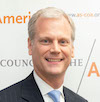Peruvians go to the polls June 5 for the second round of voting to determine their next president. Early handicappers have Ollanta Humala leading Keiko Fujimori and pulling away. Of course, anything can happen, and five weeks is an eternity in politics. Nonetheless, already a debate is raging whether Humala, should he indeed be elected, will be a Peruvian version of former Brazilian President Luiz Inácio Lula da Silva or a Chávez acolyte, or perhaps some sort of hybrid nationalist.
Credit where it is due: Humala has effectively repositioned himself during the campaign as a moderate in the Lula model, rather than the populist authoritarian in the Chávez model who scared Peruvian voters and opened the door to a rehabilitation of President Alan Garcia during the last electoral cycle. Since then he has shed his military garb and taken to wearing suits, disavowed Chávez, and toned down the anti-business, class-warring rhetoric. Investors are not delighted by the choice between him and Fujimori and they are casting a wary eye, but neither are they—yet—running for the exits.
The primary knock against Fujimori is that she is the daughter of disgraced former President Alberto Fujimori, now in jail in Peru. Much of her campaign platform has been ignored by observers and analysts obsessed with the prospect that her main initiative—were she to be elected—would be to pardon her father and serve as his puppet. That is an overly narrow view of what she would do as Peru’s first female president. Nonetheless, if elected, the polarizing albatross of her father would make it doubly difficult to govern, generating fierce resistance, particularly with a minority in Congress.
Regardless of the electoral outcome, change is coming to Peru and to U.S. relations with Peru. Whoever is elected may or may not be a populist bent on overturning Peru’s outstanding progress over the past two administrations, under Garcia and also former President Alejandro Toledo before him. But neither will the next president likely want the same close relationship with the United States. That in and of itself would represent significant change in the region, making the U.S. relationship with Colombia all that much more important across the broader Andean region where, already, three out of five U.S. ambassadors have been sent packing.
A free-trade agreement is in place between the two countries and much goodwill exists among the respective populations, and the Garcia administration has used its time in office wisely to try to lock in reforms and institutional policies that will limit the next president’s freedom to change fundamentally Peru’s economic and political direction. But Peru is not be a nation that U.S. policymakers in the executive and legislative branches will be able to take for granted. Deft handling is required.
And here’s a sleeper scenario that would completely scramble everything. Let’s say, for example, that Humala is elected, but that he fails to win a working majority in congress. Let’s say further that he really hasn’t changed as much as the Peruvian people believe, and that he still wants to pursue a more authoritarian approach that, like Presidents Hugo Chávez, Evo Morales and Rafael Correa before him, depends on a rewrite of the constitution. What to do? At that point, the 20 percent or so of the Fujimori bloc in congress looks very attractive, and a quick pardon of the former president, with a quid pro quo to gain a congressional majority to rewrite the constitution, then becomes a real possibility, with lose-lose implications for the United States.
It’s not only Keiko Fujimori who may be interested in pardoning the former president. In fact, she may actually be more constrained in doing so than Humala would be. Human rights campaigners, take note.
Will it happen? Who knows. But one thing is certain. Peru is on the cusp of real change, and U.S. policy will need to adapt to keep pace.
*Eric Farnsworth is a contributing blogger to americasquarterly.org. He is Vice President of the Council of the Americas in Washington DC.




